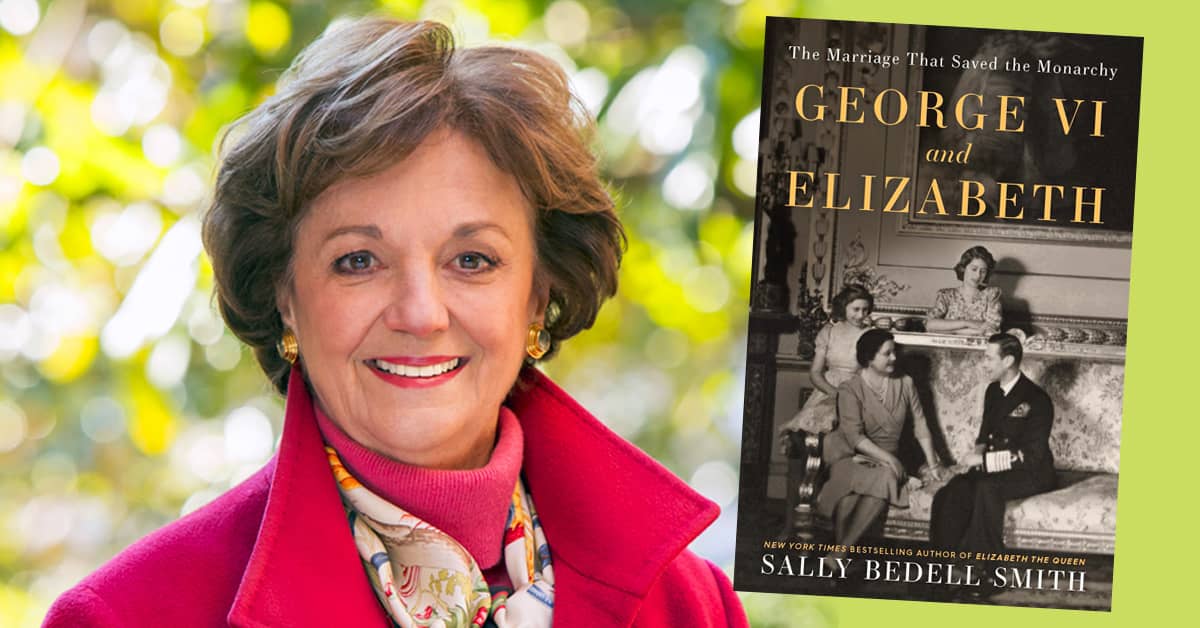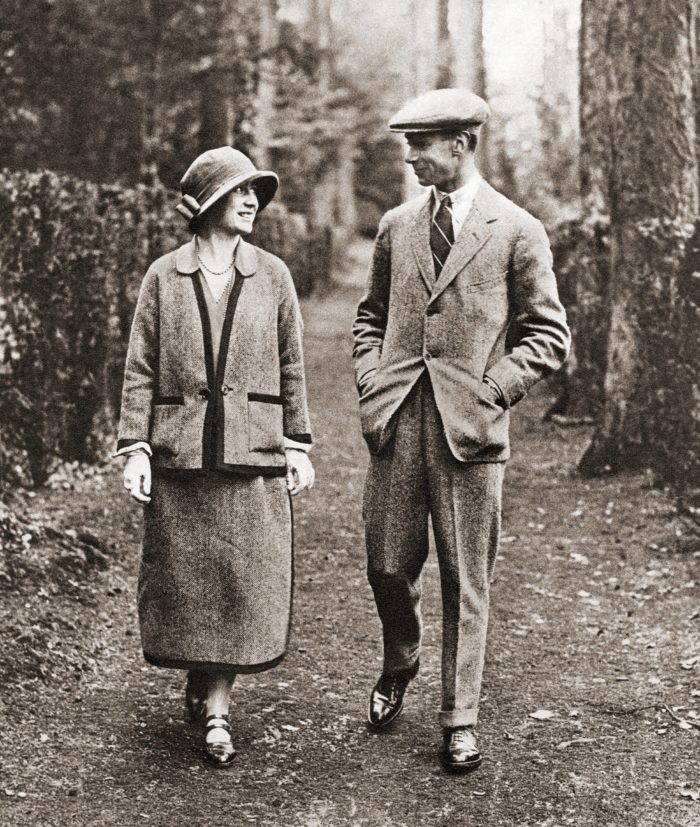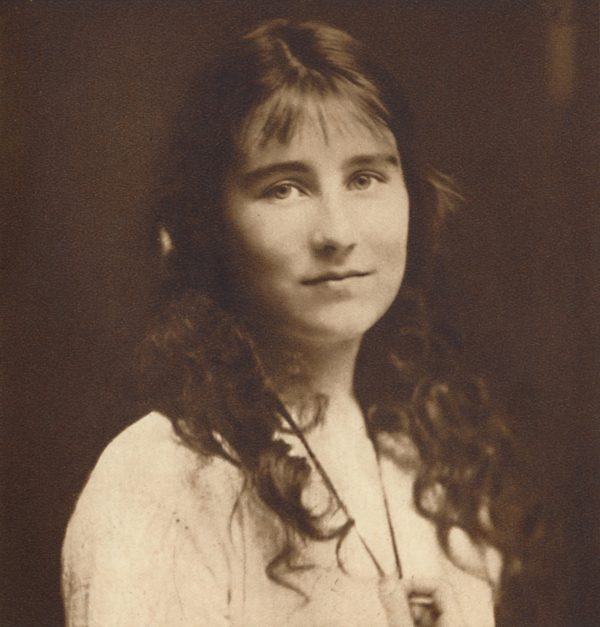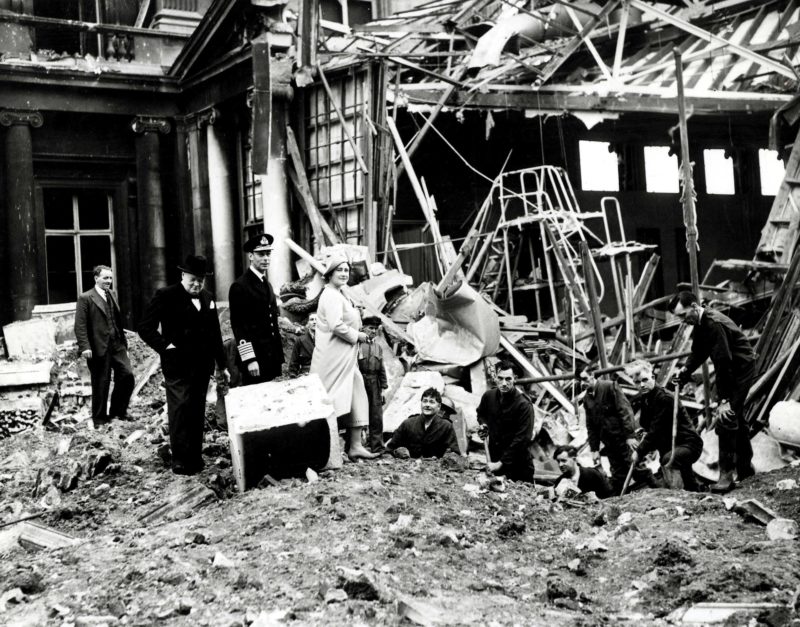
By Anne W. Semmes
The 75 members and guests who attended the Greenwich Branch of the English-Speaking Union (ESU) monthly luncheon meeting last Thursday week at the Round Hill Club received a rare and intimate view of the courtship and marriage of the late Queen Elizabeth’s parents, George VI and Queen Elizabeth. The speaker was Sally Bedell Smith, noted author of some eight biographies of celebrities, socialites – especially the royal family, with her latest being, “George VI and Elizabeth – The Marriage That Saved the Monarchy.”
“This book shines a light on what is less well known of the lives in full of a remarkable couple during their 28-year marriage,” began Smith. Note that King George VI would die prematurely at age 56, with Elizabeth at 51 destined to be the “jolly queen mom” for her 50 following years. To tell the intimate story of Albert known as “Bertie” and Elizabeth Bowes Lyon, Smith would need to see their private papers with the permission granted (after six months) by their daughter, Queen Elizabeth II. Smith would spend three months in the Royal Archives of Windsor Castle, climbing up “more than a hundred steps” to the research room at the top of the Castle’s round tower.
Smith was also granted access to the private papers and photo albums in Elizabeth’s Strathmore family Glamis Castle in Scotland. “The archives were in a small room at the top of another tower, also reached by an ancient stone staircase of a hundred steps.”
The romance begins
“The letters between Elizabeth and her future husband, as well as her mother, her siblings, her governess, and her friends were revealing and funny and often quite moving,” told Smith. So, it was the summer of 1920 “at a military ball in the Ritz Hotel in London, that Bertie [age 24] first danced with Elizabeth [age 20] and fell in love.” Bertie – with his title of Duke of York (with big brother David, the Prince of Wales destined to be King) would then pursue Elizabeth for 30 months, told Smith. He first had to overcome her attraction to his equerry (assistant – and friend), and her reluctance to take on those royal duties as Duchess of York.
With some “discreet meddling” from Bertie’s mom and friends, the equerry was given “a lucrative job in the United States, which cleared the courtship field for Bertie.” And Smith added, “Bertie felt equally in love with Elizabeth’s family when he joined them for shooting weekends at Glamis Castle and at St. Paul Walden Fury, which was their English estate.”
“They competed on the Glamis tennis court,” said Smith. “They danced reels…they tramped across fields to shoot cartridges, grouse, and pheasants…They kept up cordial correspondence and saw each other at London dinner parties and country house dances. The tone of their letters on both sides was restrained, although each showed genuine anguish.”
While turning down Bertie’s proposals in 1921 and 1922, “Elizabeth could never bring herself to shut the door on Bertie’s overtures,” told Smith. “She called him her most faithful friend.” In her diary begun at the beginning of 1923, the diary charts the 12 days between Bertie’s proposal and Elizabeth’s final acceptance,” told Smith. “We see her vacillating and worrying…she knew her life would soon change dramatically.”

The commitment is made
It was in “the enchanted garden” so named by Elizabeth in her home at St. Paul’s Walden Fury, having “talked things through” with Bertie, that finally, “close to midnight on Sunday, January 14, 1923, Lady Elizabeth Bowes Lyon said yes.”
Now committed, “Their letters to each other changed completely. They overflowed with affection – ‘I do love you Bertie and I am certain that I shall more and more.’” The two were married at Westminster Abbey “before a congregation of 1,780 guests 101 years ago on April 26,” said Smith, and “As she and Bertie drove to the reception at Buckingham Palace and waved to the crowds, it was the first time she appeared in public as a royal Duchess in their life together as Duke and Duchess of York.”
In those following happy years until the 1936 death of Bertie’s father King George V, they “enjoyed country house weekends and London dinner parties as well as spending time at Balmoral… They went big game hunting in Africa for nearly four months. The experience tested their endurance with long and difficult walks through rugged terrain…They both found living rough to be liberating.” With the birth of young Elizabeth, then Margaret, they “settled into a life of domesticity and public duties in London and the countryside,” told Smith.
But with the death of King George came the crowning of brother Prince of Wales as King Edward, with his reputation said Smith as “spoiled and cynical, self-absorbed and insensitive.” Yet “Bertie still called him, ‘my dear old David and Elizabeth enjoyed his company…when Bertie was off on official business.” With King Edward’s reign lasting just short of a year after abdicating when the British government and the Church of England refused to allow his twice divorced wife Wallis Simpson to become queen, Bertie ascended to the throne as King George VI with Elizabeth the new Queen.
Bertie becomes King
It was in Bertie’s journal kept during the abdication crisis that Smith found what he had felt upon learning his fate. “I broke down and sobbed like a child,” he’d written. “The day after he became king, he spoke in a low, clear voice, but with many hesitations.” Bertie had developed a stammer in his young years that lasted all his life.
“At first, he and Elizabeth felt rattled by their new responsibilities,” said Smith. “But as she wrote to a friend, ‘The curious thing is that we are not afraid.’ The mission of 41-year-old Bertie and 36-year-old Elizabeth was to rebuild the foundations of the monarchy and to earn the admiration of the British people with their diligence and their decency.”
As the approach to World War II advanced they would see Bertie’s brother David as the Duke of Windsor “act shamefully,” said Smith, when he and Wallis, now the Duchess of Windsor had spent time in Germany “meeting with Adolf Hitler and his high command and expressing their approval of the Nazi dictatorship.”
King George VI would partner with Franklin Roosevelt in “laying the groundwork to provide Britain with lifesaving assistance until the Americans would officially join the fight by declaring war in November 1941, from the first day of the Second World War on September 3, 1939, to its end in August 1945,” noted Smith.
“The most severe test for Bertie and Elizabeth,” said Smith, “came with waves of bombing unleashed in Britain by the Nazis starting in late August 1940… The first of nine bombs targeting the Palace exploded under the King’s study shortly after one in the morning on September 10, 1940, on the first day the couple hosted a luncheon with Prime Minister Winston Churchill.” Then, on September 13 the Palace suffered a second direct hit, “which happened so fast that the King and Queen didn’t have time to reach the underground shelter… The King and Queen managed to escape without a scratch.”
“Together,” said Smith, “they inspired Britain and indeed the world with their bravery and their commitment to duty, especially during a war when they often risked their lives…They represented Britain at its best, and by example and training, they prepared their elder daughter to be an exceptional Queen who would reign for a record breaking 70 years.”






